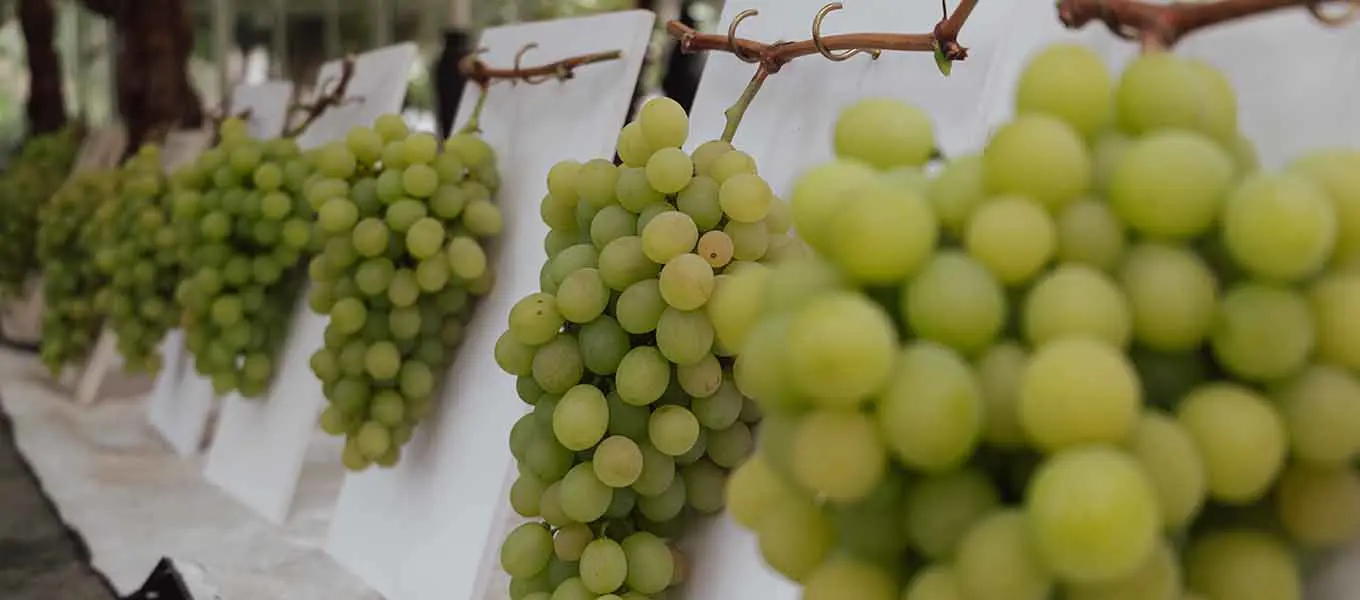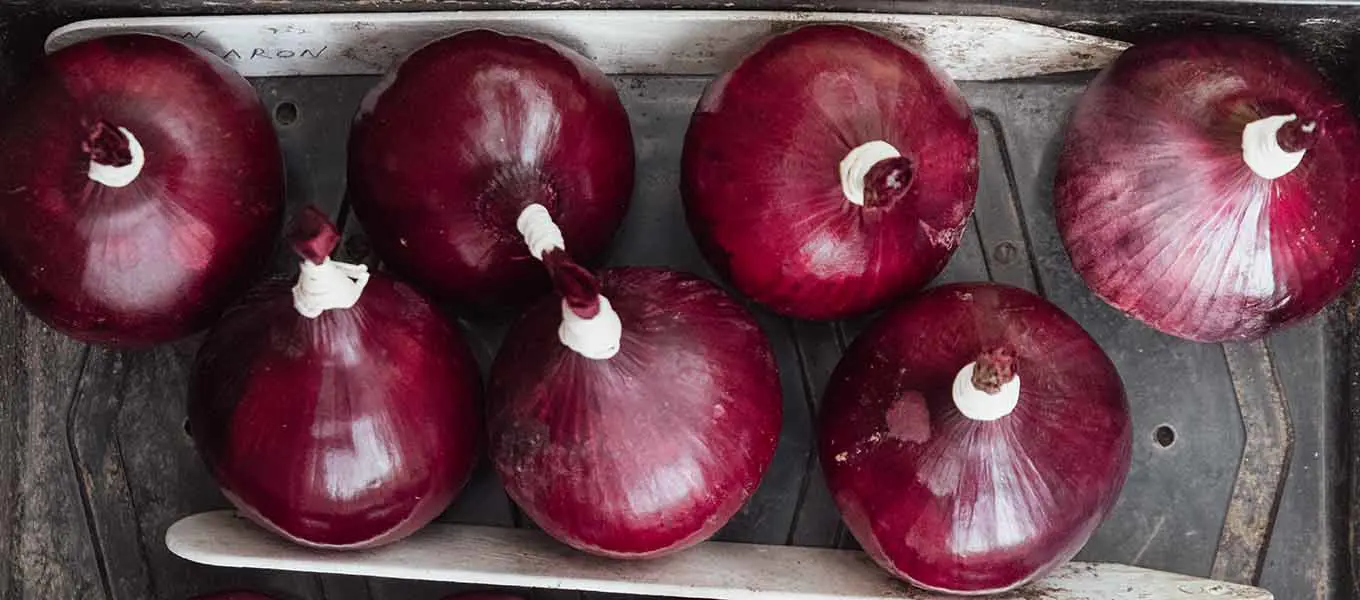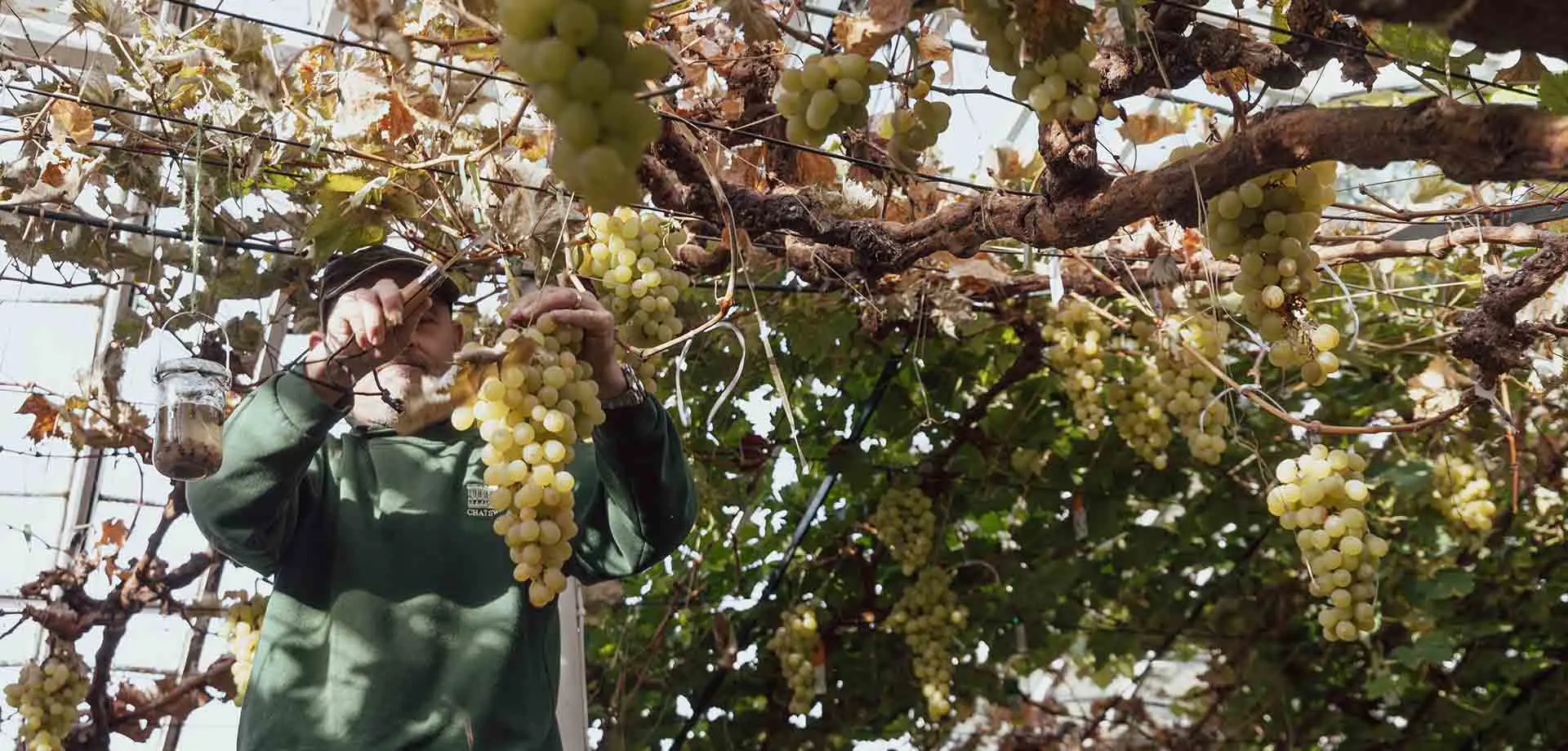Despite being one of the wettest Octobers on record, the month remained productive with planning and preparation for the coming year underway in all of the production gardens.
RHS award success
There was stiff competition from many expert growers at this year’s RHS Autumn Fruit and Vegetable Competition held at Hyde Hall in Essex, however, the team were delighted to come away with a hefty haul of prizes.
In summary, the awards were:
- Seven first prize awards, including single bunch grape, double bunch grape, marrows, beetroot cylindrical, beetroot, long, courgettes and chard
- Eight second prize awards, including sweetcorn, kale, red cabbage, coloured carrots, celeriac, cos-type lettuce, Romanesque cauliflowers and herb in a pot
- Eight third prize awards, including potted chilli plant, collection of three salads, beetroot glob red, celery, lettuce curled, red onion, sweet peppers green and turnip
- And a fourth prize award for sweet pepper red
It’s a common misconception that growing fruit and vegetables for shows means growing the largest specimens possible. In reality, judges are looking for the best examples of each variety, and often the overly large entries are not placed by judges.
As well as supporting the RHS, entering shows is a part of Chatsworth’s horticultural heritage. It’s important to the team to continue the tradition and an opportunity for justified recognition for their skill and hard work.

Sweet success
Until recently, the only produce ‘grown for show’ were grapes, with everything else from the Production Gardens grown for use in the house, restaurants, hotels and inns, or used in products sold at the farm shop.
However, following a particularly good growing year, Ian was delighted to send his (RHS prize-winning!) ‘Muscat of Alexander’ grapes to a local Derbyshire wine producer to be made into a high-quality dessert wine to be served in the hotels in the spring. Around 350kg of grapes produced in excess of 250 bottles of wine, and there are still a few bunches remaining on the vine to be enjoyed as table grapes over the coming months.
Seeing the produce being used and enjoyed by others particularly motivates the garden team. Autumn is a time of abundance, and crates of harvested crops have been sent to the estate restaurants, hotels and inns for use in their menus each week, and to local makers for small batch seasonal products, including Plum Porter, Candy Cane Gin and Rhubarb & Ginger Gin.
Edibles now ripe and ready for use include potatoes, beetroot, chard, kale, cauliflowers, cabbages, bulbing fennel, kohlrabi, pumpkins, squash, celeriac, celery, carrots, onions, shallots, garlic, nasturtium flowers and leaves, mixed edible flowers, mixed herbs, and passion fruits. There are also a few apples still left on trees that are being picked to order.

Looking ahead
In the glasshouses, the team has commenced the sometimes challenging task of finding space for all of the tender summer stock that needs to be sheltered over the winter months. Many of the succulents, salvias, bananas, cannas, palms and pelargoniums, have been lifted and are now under cover.
The entire pelargonium collection was propagated from cuttings taken in early September and has now rooted, ready to be potted up to grow on for use next summer. This collection of plants is a Chatsworth favourite and will be used for interior decoration in the house and estate properties, and in the outdoor planters that furnish the greenhouse terraces and the Stables courtyard.
Flower gardens
In the Cutting Garden, Sophie is stripping back deteriorating foliage while leaving in-situ seasonal foliage for the florists to use. The colour palette has evolved with the changing seasons; the vibrancy of late summer and early autumn has been replaced with texture and muted hues. A couple of frosts and the month’s incessant rain saw off the last of the dahlias, rudbeckia and late flush of roses, but the team still have grass varieties, rich-coloured amaranth, rose hips, mixed seed heads, various foliage and stunning indoor-grown chrysanthemums to work with.
Like Marcus, Sophie will be planting many thousands of bulbs for a spring harvest, but this job will have to wait as the ground still has some warmth in it. While she waits, she’ll continue to tidy and mulch her flower beds.
Planting for spring
Marcus has been potting up a range of bulbs, over 10,000, to add colour and scent to our pot work from December until May. Paper White Narcissus, Hyacinths and Amaryllis will be the first to bloom and will bring rich colour over the festive period.
The pots for next spring have been planted in layers to get dense and floriferous displays, with a long succession of blooms and colours. In this process, the bulbs are layered one on top of the other, with the largest and latest to flower planted the deepest, followed by smaller and earlier flowering varieties on top.
The Dutch call this a ‘bulb lasagne’, why not try making one of your own:
- The bulbs need to be spaced slightly further apart than you would normally plant them for a single species planting. Marcus leaves a bulb-width gap between each bulb he plants in a layer.
- Cover each layer with 50 – 60 mm compost before planting the next layer up. The deepest bulbs will often be planted as deep as 300mm.
Most of Marcus’s lasagne combinations will contain four different layers. As an example, the ingredients for the large pots around the central pond in the Stable courtyard are Tulip ‘Colour Burst’, Narcissus ‘Starlight Sensation’, Muscari Armeniacum and Anemone ‘Violet Star’.
Look out for these displays in the spring and summer in the Stables courtyard.
We use platforms such as YouTube and Vimeo to display videos. These require the use of cookies, for which we need your consent. To watch this video, please click here to allow cookies.






